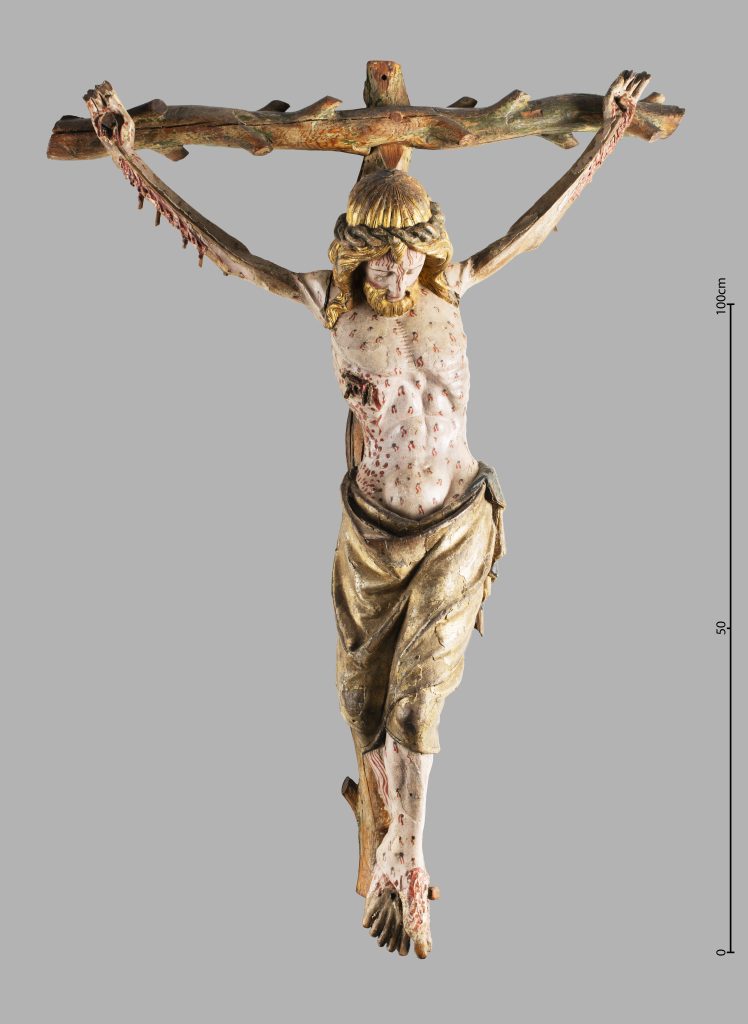From the cross, which is composed of two trunks with cut-off branches, hangs a wound-covered, emaciated Christ. His rib cage is lifted forwards, and splinters from the lance can be seen in his side wound. Blood from the wound sin his hands trickles down in thick drops along his arms. On his shoulder-length golden hair a crown of thorns is bound. Christ’s head is bowed onto his chest and his eyes are shut. With its strong emphasis on suffering, this crucifix follows the type of the Crucifixus dolorosus, which became widespread in Europe in the early fourteenth century.

A concentration of surviving examples is found in the Rhineland, with the crucifix in the church of St Mary im Kapitol in Cologne from c. 1300 being one of the earliest. It was along the Rhine in particular that Passion mysticism flourished during the thirteenth and fourteenth centuries, with Meister Eckhart, Heinrich Seuse and Johannes Tauler. Around the same time, the type also appeared in Italy, Spain, France, Poland, and Scandinavia. Around fifty Crucifixi dolorosi are preserved in Scandinavia, with Norwegian examples from Hov (now Trondheim, Vitenskapsmuseet, inv. no. 00907), Odda, Olstad, Sør-Fron and Tretten (all now Oslo, Kulturhistorisk museum, inv. nos. C33286, C33289, C33256, C3013).
The church of Fana near Bergen was a place of pilgrimage associated with a miraculous silver cross which, according to legend, was fished up from the fjord near the church by two brothers, one of whom was blind. His ensuing cur stimulated the growth of pilgrimages. After the silver cross had been removed and melted down in the course of the Reformation, the cult seems to have been transferred to this wooden cross. Annexed to the church was a hospital run since 1303 by the Brethren of the Holy Cross at the Apostles’ church in Bergen. The hospital was frequently endowed in the wills of Hanseatic merchants based on Bryggen in Bergen. From the church in Fana, a bronze door ring is also preserved (MA 56).
Norway/Scandinavia, 1325-1350
From Fana near Bergen, in the museum since 1878
Oak (Corpus) and pinewood (cross), polychromed
H 136 x W 109 x D 36 cm
Inv. no. MA 236